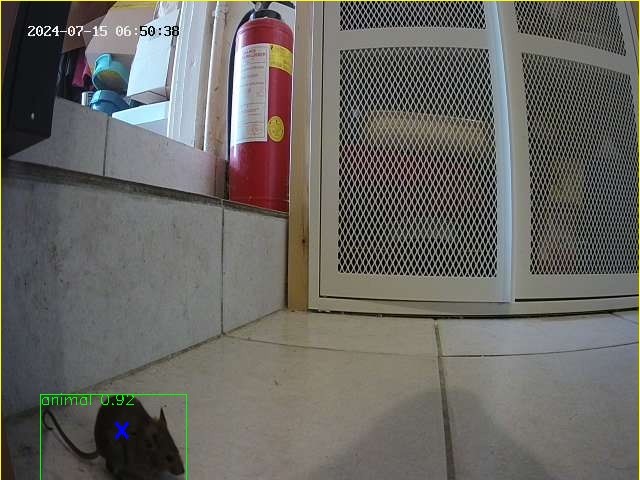Hi everyone, I'm new to this site!
A bit of info about my camera trapping project: I deployed a combo of Reconyx Hyperfire and Browning cameras on ~300 Brown Booby nests in the South Pacific. My primary goal is to detect rats, crabs, and high water that leads to nest failures. I have many billions of photos; storage, organization, and now review have been challenging. I have been slowly chipping away with tagging on Timelapse2, but am wondering if there are other options. Some issues are arising in time skips/photos falling out of order, inconsistencies with time intervals, and then of course how to pull the relevant data out of the thousands of resulting .csv files in R.
I would like to know if anyone knows of any type of AI that focuses on rat eye shine specifically? I believe most of my other information will have to be gathered manually (MegaDetector has not been relevant unfortunately), but if there was an automated way to at least pull out rats from the nocturnal photos, that would be helpful.
I welcome any responses and advice!
12 July 2024 2:02pm
@dmorris is always interested in finding cases where Megadetector has failed - here ya go Dan!
He's also a camera trap aficionado so will probably have great advice for ya too!
13 July 2024 3:21pm
I would separate your question into two, re: (a) platforms and (b) AI.
Re: platforms...
One of the advantages (the main advantage?) of working with a cloud-based system is that the storage and data management issues are handled for you. So if a cloud-based system is on the menu for you, check out any of the cloud-based systems I list here (Wildlife Insights, Agouti, TrapTagger, TRAPPER, WildTrax, Animl, etc.).
But cloud-based systems are not a panacea, and there are lots of reasons folks choose to work locally. Often working locally is preferred due to bandwidth, data provenance, or being absolutely sure that your images are archived somewhere you can still access them in five years, but also in general when it comes to pushing lots of images in front of your eyes quickly, nothing will beat a local tool, and among local tools, Timelapse is still the most widely used AFAIK and the fastest for most users. I'll get to this below, but AI might just not help you in this case, so my best recommendation is to invest in really getting to know all of Timelapse's bells and whistles, especially the "quick paste" tool, and all of the keyboard shortcuts. If you're using the mouse to navigate, you've lost the battle already, and 30 minutes learning keyboard shortcuts is worth a week of tinkering with AI.
FWIW in general, no matter what system you use, you'll have to do something with .csv files in R, and overall I wouldn't expect that to be more or less difficult depending on the system you choose.
Re: AI...
@carlybatist is correct, I loooooove difficult MegaDetector cases. Based on your description, it may be the case that small rodents are too difficult, but don't give up hope quite yet; I have a bag of tricks I try in these more difficult cases. I will reach out by email to ask you for some images, and if any of the tricks work, I will post back to this thread.
It also couldn't hurt to try a couple other systems in parallel, just to see what happens, but I'm not optimistic that any other systems will work if "vanilla MegaDetector" doesn't work, in part because the systems that I think are most relevant themselves depend on MegaDetector. But FWIW, the two systems I would try - even if cloud-based systems are not on the menu for you - are Wildlife Insights and Animl. There are other systems out there as per above; I mention Animl specifically because it has grown up around small mammal monitoring on islands, so, maybe a better-than-average shot of doing something reasonable in your case.
IMO the best path to pursue is "Dan's bag of MegaDetector tricks", but I want to set expectations: small nocturnal rodents remain difficult for AI and the odds are not in our favor.
15 July 2024 10:26am
I'm being quite daring by making statements on a forum that is frequented by Dan Morris (obviously in deference to his extensive knowledge on the subject :-) ), but here goes. Likely the version of megadetector that you used was using YoloV5. YoloV5 came out a similar time to YoloV4, which from memory was around end 2019 time frame. Again from memory I think the performance of Yolov5 was similar to that of YoloV4. The versions that came out after this, (Somewhat in order) Scaled Yolov4, Yolor and then yolov7, yolov6 (Yolov8 somewhere in there) are much better at matching smaller objects and in darker conditions. Dramatically so.
PyTorch Wildlife will be releasing a beta of a version that will be using YoloV9. This could possibly help with your problem.
Co-incidentally, I'm playing with megadetector now for detecting and recording mice. This was from this morning:











Carly Batist